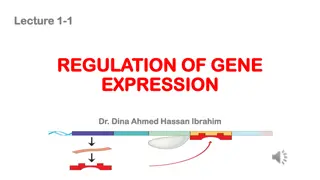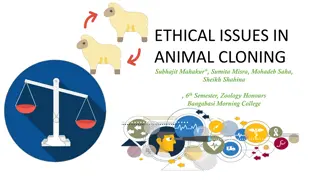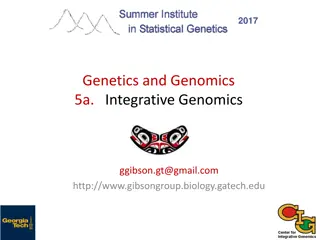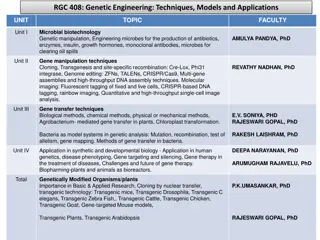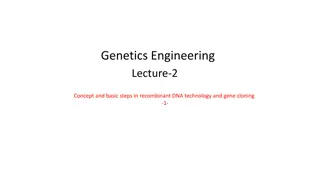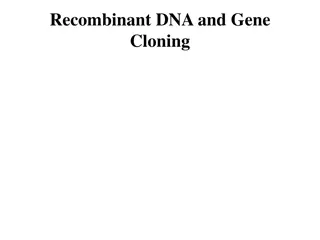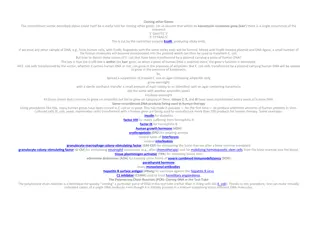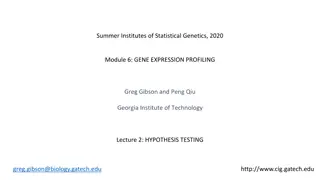Gene Cloning: Understanding Techniques and Applications
Gene cloning involves the production of exact copies of specific genes using genetic engineering, offering significant benefits in medicine, agriculture, and forensic science. Discover the history of cloning, the importance of gene cloning in various fields, and the role of restriction enzymes in DNA manipulation.
Download Presentation

Please find below an Image/Link to download the presentation.
The content on the website is provided AS IS for your information and personal use only. It may not be sold, licensed, or shared on other websites without obtaining consent from the author.If you encounter any issues during the download, it is possible that the publisher has removed the file from their server.
You are allowed to download the files provided on this website for personal or commercial use, subject to the condition that they are used lawfully. All files are the property of their respective owners.
The content on the website is provided AS IS for your information and personal use only. It may not be sold, licensed, or shared on other websites without obtaining consent from the author.
E N D
Presentation Transcript
BIO TECHNOLOGY GENE CLONING Dr.M.DEIVANAYAKI
The production of exact copies of a particular gene or DNA sequence using genetic engineering techniques is called gene cloning. The term gene cloning, DNA cloning, molecular cloning, and recombinant DNA technology all refer to same technique. When DNA is extracted from an organism, all its genes are obtained. In gene (DNA) cloning a particular gene is copied forming clones .
Who discovered cloning? The first instance of cloning dated back over one hundred years ago in 1885 with the cloning of a sea urchin by Hans Dreisch.
IMPORTANCE OF GENE CLONING In medicine : cloning is used to find out about many genes that cause diseases, this is also known as gene therapy. By using cloning a person is able to find out if he or she has inherited a gene on a chromosome from an affected parent by a procedure called genetic screening. Producing livestock faster: Instead of cloning livestock for consumption livestock is cloned to make breeding stock. This is a more time effective way to breed livestock, however, only cells from a high-quality carcass can b cloned to give rise to an animal that is able to pass its superior genes to its offspring. Improving crops: Cloning can make plants resistant to herbicides, pest damage, infections and diseases improving the quality of the crops we eat. Use by police: Police have also used cloning in investigations for identification, this is called genetic fingerprinting. This process is done by extracting DNA from body fluid such as blood or saliva and cutting the DNA with restriction enzymes.
Restriction enzymes are DNA-cutting enzymes. Each enzyme recognizes one or a few target sequences and cuts DNA at or near those sequences. Many restriction enzymes make staggered cuts, producing ends with single-stranded DNA overhangs. However, some produce blunt ends. DNA ligase is a DNA-joining enzyme. If two pieces of DNA have matching ends, ligase can link them to form a single, unbroken molecule of DNA. In DNA cloning, restriction enzymes and DNA ligase are used to insert genes and other pieces of DNA into plasmids.



